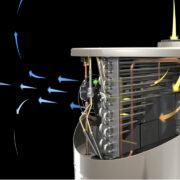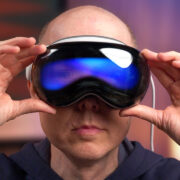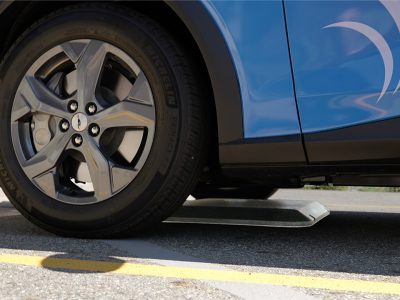I’ve had my Tesla Model 3 for over two years now and thought it was worth doing an updated review. How’s it been working out? What hasn’t been so great? Yep, that happened. And probably the one thing that’s surprised me the most … this isn’t the same car I bought two years ago. And stay tuned until the end, I’ve got a special giveaway for Tesla owners.
So right up front I’m going to call myself out. I … haven’t driven this car as much as you might expect for two years. At this moment I only have about 7,500 miles on the car, but I can explain why. Right before I took delivery of the car I had a major shift in my career, which took me from driving 50 miles a day to working from home. It’s main use has been for road trips to visit family in New York City and upstate New York.
How’s it been working out
Regardless of the homebody lifestyle I’m living right now, there’s still a lot to talk about with my Model 3 experiences. My original review still holds … this is the best car I’ve ever owned. Period. Or as I said in my original review:
"It’s hard to not get a smile on your face when you drive it. It’s built like a tank, drives like a sports car, and is one of the safest cars on the road."
It’s not to say that there aren’t things that drive me a little nuts because there are. Like this … but I’ll get into that a bit later.
I’m still baffled by the choice to make nondescript door buttons on the inside that require explaining to passengers how to get out. Thankfully there are cheap button labels you can get to solve that problem, and they’ve fixed it on the latest models. My car has the water in the trunk issue. When you open the trunk lid in the rain water rushes off the lid, down the window, and jumps straight over the gasket into the trunk. They’ve fixed that issue on the newest models, but I’ve still got it on mine.
But driving and charging the car up is fantastic. As I already mentioned, I work from home so the vast majority of my charging happens here. I’ve been using TeslaFi from pretty much day 1 to track my driving and charging patterns, so I’ve got some good data on how much energy I’ve used.
I’ve had 134 home charges for 2,183 kWh used. That’s an estimated cost of $509. There have been other times that I’ve charged up at families houses or free level 2 chargers out and about, so while those cost me nothing they account for about 280 kWh of charging.
And for Supercharging I’ve got a bunch of free miles I’ve earned through the referral program … an insane amount actually, so thanks to all of you who used my referral code. But Supercharging accounts for about 539 kWh at a cost that would have been $134.74. That’s a little tougher to calculate accurately though since kWh pricing has changed while I’ve owned the car and it varies by location, but that’s a pretty close estimate.
In Massachusetts the average gallon of gas costs $2.11. If I was still driving a car that got around 30 mpg at those prices, I’d have spent somewhere around (244 gallons) $515 or more. Not too different from my energy use … in theory, but I have solar so that original price estimate for me is off. The average kWh price where I live is $0.24, but with my solar my average price during the past two years is around $0.09. That means the charging at home cost would be closer to $196 in energy. Not bad.
I’ve seen some strange numbers around my max battery level, especially when compared to data from the fleet. My current high end at 100% is coming in around 297 miles vs. the 310 when I first got it. The average for Model 3 owners at this period is around 304, so I’m off by about 7 miles. In the grand scheme of things I’m not too concerned since it’s an estimate from the computer and not necessarily real world use case. When I drive long distances I have plenty of range. And the drop has leveled off around where it is right now. The big drop happened in year 1. Year 2 has been steady … in fact it increased a little bit after a software update.
Maintenance
And that brings me to maintenance. With only 7,000 miles I haven’t rotated my tires yet, but probably will soon. It’s due, but as of right now I haven’t.
Tesla recommends changing the air filter and testing the brake fluid every two years.1 Given my driving I haven’t done any of that yet, but will soon. Nice thing is that those aren’t going to be expensive things to do. Bottom line is that for me I’ve spent no money on maintenance other than windshield wiper fluid and washing the car.
But that’s not to say that no service has happened because I did have a few issues that needed to be dealt with. After I had the car for a bit I noticed a strange distortion in the windshield glass. It was right along the drivers side edge about eye level. It didn’t impact my view looking straight ahead, but it was distracting. I also had a strange whistling noise coming from the windshield at high speeds. Tesla replaced the windshield which solved both issues and cost me nothing since it was under warranty. I also had purchased the Full Self Driving package, so when the upgraded computer became available I took my car in to get that swapped out. After that upgrade my glove box wouldn’t open, so a service tech stopped by the house and fixed that pretty quickly. Again, no cost to me … and right at my house.
So all in for the first two years I have no cost for service or maintenance.
What’s not so great
I had some nitpicks of the Model 3 in my initial review around some of the infotainment system bugginess, screen controls, the keycard, and door handles. Check out my original review video if you want to see more details about those, but over all the negativity I had towards those has diminished.
I adapted to the screen controls pretty quickly, but there were frustrations with having to tap through a few menu items to get to things like wiper controls at first. It’s a common knock you hear about Tesla’s design choice of going with a single touch screen over lots of buttons and knobs. But the con of this setup is also a positive, since they’ve continued to update the user interface and move elements to more logical locations based on user feedback. Not exactly something you can do with a button and knob design.
Updates, updates, updates
Which leads me to my biggest takeaway after two years. The thing that’s really shocked me the most is that this isn’t the same car I took delivery of … at all. Tesla’s regular software updates have changed almost every aspect of the driving experience … sometimes is substantial ways.
The list of updates is kind of staggering. This isn’t a comprehensive list, but here are some of the highlights:2
- Dog mode
- Camp mode
- Video games and game controller support
- YouTube, Netflix, and Twitch
- Enhanced summon
- And the car has more range through a software update
But my favorites are around things like Autopilot. This was one of the big selling points of the car for me. I mean … at the time I bought it I thought I’d be using it for my daily commute and we know how that worked out. But for long road trips Autopilot has made those trips so much more enjoyable. I’m less stressed and more relaxed during the trip since the car is taking care of most things. Especially with the updates around navigate on autopilot and auto lane changing, which means the car literally drives itself and takes the necessary highway exits. Add to that the latest full self-driving features that have been rolling out, like stop sign and stop light awareness, and updated visualizations on the screen to convey what the car is seeing and recognizing.
Somewhat related to that are the improved Supercharger speeds that pushed my charging rates up to 150 kW at V2 Superchargers, and 250 kW at V3 Superchargers. And how it now warms up the battery as you near the Supercharger to improve the charging rate when you start. They’re both noticeable improvements when driving long distances.
I was hit up a lot to by companies wanting me to check out their dashcams. Which is kind of a hard sell after Tesla rolled out their Dashcam and Sentry mode feature that uses every camera around the car. And the much needed update that came out not to long ago which makes it possible to view those recordings on the car’s screen.
And finally, as someone who just recently got a Tesla Powerwall, I was pretty excited when I saw the Tesla Powerwall Coordination come out in an update. The car and the Powerwall now work in sync to divert power from charging during a power outage. And to resume charging again if there’s excess solar that the battery can’t store. I love that.
Now, it’s not all sunshine and rainbows with these updates. Sometimes the software is very much in a beta state, like when the enhanced summon feature was first released. If you tried it when it was new … it was a little like watching a three-year-old trying to drive a car through a parking lot. While these systems always improve over time, and many of them have become extremely reliable, there’s an element of caution you have to take with new ones.
Right after I finished the first draft for this video, my Model 3 got a firmware update notice. My car had been hanging out on the 2020.32.3 firmware for a while, but got an update notice for the 2020.36.11 firmware. I happily tapped the confirmation on the app to get started. The next morning I needed to move my car out of the garage and that’s when I discovered that my screen was black. All of the core systems of the car worked just fine. I could put the windows up and down, drive the car, use the signals, but nothing that involved the touch screen. I tried the forced reboot method of holding down the break and pressing the two buttons on the steering wheel … nothing. Tesla’s phone support was super friendly and tried to ping the car remotely to see what was happening, but wasn’t able to get a response. That meant I had to get the car to a service center.
I ended up driving the car about 12 miles to the nearest service center, which was a little unnerving. Regen breaking didn’t seem to be working. The acceleration was slower than normal. And I couldn’t tell if my signals were working or not, other than seeing their reflection on cars in front of me. And yes, I drove very cautiously and slowly. You can actually use apps on your phone to get a basic speedometer, which is kind of funny.
As awesome as over the air software updates can be, it’s situations like this that are a reminder of the cons for this type of thing. In this case something had faulted in the autopilot module, so it wasn’t a software problem it was a hardware problem … but the update triggered the failure.
Your comfort level with early software builds, and the rare software update snafu, will play a big role in your opinion on this. I’ve had things go wrong on other cars I’ve owned too. This didn’t strike me as a fundamental flaw with the car, but just some bad luck. The Tesla service center took care of me, gave me a loaner while they diagnosed the problem, and I got back up and running pretty quickly.
Overall, this issue was frustrating, but nothing more than that. However, it is a reminder that the amazing, ever evolving feature set that comes with software updates is also a bit of a double edged sword. Software updates can be dicey if you like to live on the bleeding edge. Tesla has tried to address this with a setting in the car. By default the car is set to update on a more conservative frequency, but if you’re a little more adventurous you can change this setting to advanced.
When you take into consideration all of the features that have rolled out over the past two years, my car is dramatically different from when I bought it. It can do things now that I didn’t think would be possible at this point in owning it. Compare that to pretty much every single other car on the market, like my wife’s Mazda 3. It’s a great little car. Any guesses how many software updates or patches it’s had since she got it? Zero. It’s the same car it was the day she drove it off the dealer’s lot. This is a fundamental change to the traditional car user experience and something we’re going to see more and more from other companies in the future. I know that may freak some people out, but look at this from the 10,000 foot view. My car is safer than it was two years ago because of sentry mode, updated lane assist and accident avoidance features, and auto pilot.
So just like my original review … yes, I still get a smile on my face every time I get into my Model 3 … even after 2 years. It’s the best car I’ve ever owned and keeps getting better.


















Comments